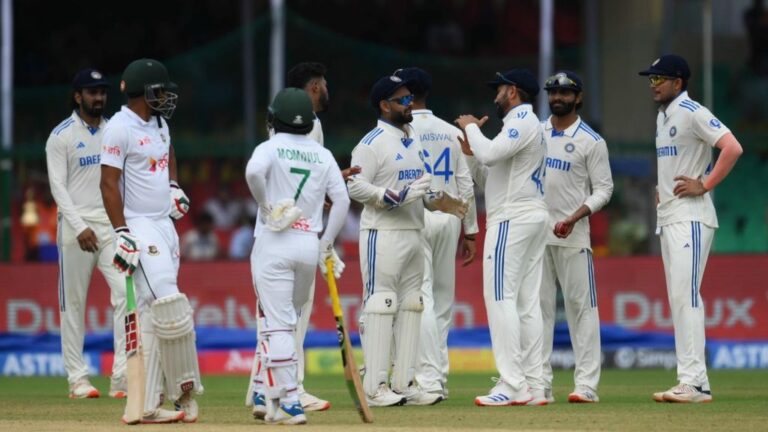Cricket’s Growing Popularity in Non-Traditional Markets
Allpaanel, 11xPlay: Cricket, once predominantly popular in Commonwealth countries, has witnessed a notable surge in interest and participation in non-traditional markets across the globe in recent years. The rise of cricket in countries outside of the Commonwealth can be attributed to various factors, including increased global exposure through broadcasting, growing participation in international competitions, and the rise of shorter and more viewer-friendly formats like T20 cricket.
This shift in cricket’s popularity has been particularly pronounced in nations such as Afghanistan, Nepal, the United States, and the Netherlands, where the sport has gained significant traction among both players and fans. The emergence of new cricketing powerhouses outside of the traditional Commonwealth nations is reshaping the global cricketing landscape and highlighting the sport’s potential to transcend geographical and cultural boundaries.
Factors Contributing to the Spread of Cricket in Non-Traditional Markets
Cricket’s growing popularity in non-traditional markets can be attributed to various key factors. One significant reason is the increasing globalization and interconnectedness of the world through technology and media. As cricket matches are now easily accessible through live streaming, social media, and television broadcasts, audiences in new territories have greater exposure to the sport, leading to a surge in interest and following.
Furthermore, the success of international cricket tournaments such as the ICC World Cup and T20 World Cup has played a crucial role in expanding the fan base of the sport beyond its traditional strongholds. These high-profile events not only showcase top-tier cricketing talent but also provide an opportunity for teams from diverse regions to compete on a global stage, capturing the imagination of audiences and fostering a sense of inclusivity within the cricketing community.
Impact of T20 Leagues on Cricket’s Global Appeal
The exponential growth of T20 leagues in cricket has significantly heightened the sport’s global appeal, transcending boundaries and capturing the enthusiasm of fans worldwide. The fast-paced, high-energy format of T20 matches has brought a new level of excitement and entertainment to the game, attracting not only traditional cricket followers but also a younger, more diverse audience.
Moreover, the emergence of star players from various countries in T20 leagues has increased the international flavor of the sport, fostering a sense of unity and sportsmanship among nations. The competitive nature and thrill of T20 cricket have spurred interest in both established and emerging cricket markets, paving the way for a more inclusive and dynamic cricket landscape on a global scale.
Challenges Faced by Cricket in Penetrating Non-Traditional Markets
Cricket’s journey into non-traditional markets has not been without its hurdles. One of the primary challenges faced by the sport is the lack of infrastructure and facilities in these regions. Without proper cricket grounds, training facilities, and equipment, it becomes difficult to foster interest and develop talent among aspiring cricketers. This dearth of resources often acts as a deterrent in popularizing the sport in new territories.
Moreover, the unfamiliarity with the rules and nuances of cricket poses another obstacle in penetrating non-traditional markets. Unlike in established cricket-playing nations where the sport is deeply ingrained in the culture, countries unfamiliar with the game may find it hard to comprehend the intricacies of cricket. This lack of understanding can lead to a disconnect between the sport and the audience, hindering its growth and acceptance in new regions.
Successful Strategies for Promoting Cricket in New Territories
In order to successfully promote cricket in new territories, it is essential to prioritize grassroots development programs. By investing in local schools and communities, cricket can be introduced to a wider audience from a young age, creating a sustainable fan base for the sport. Providing access to coaching clinics, equipment, and facilities is crucial in nurturing talent and generating interest in cricket among the youth.
Furthermore, forming partnerships with local sports organizations and government bodies can help in establishing a strong foundation for cricket in new territories. Collaborating with existing sports networks can leverage resources and expertise to organize local leagues, tournaments, and events, creating more opportunities for people to engage with the sport. Building relationships with key stakeholders and influencers within the community can also aid in promoting cricket and fostering a sense of belonging and pride among the local population.
Emerging Cricket Powerhouses in Non-Traditional Markets
The rise of cricket in non-traditional markets has brought forth new emerging powerhouses in the sport. These countries, once considered unconventional grounds for cricket, have made significant strides in developing their cricketing infrastructure and talent pool. With a growing fan base and increased investment in the sport, nations like Afghanistan, Nepal, and the United States are rapidly emerging as cricket powerhouses in non-traditional markets.
These emerging cricketing nations have showcased their potential on the international stage, challenging more established teams and making their mark in global competitions. The passion and dedication of players, coupled with the support of enthusiastic fans and governing bodies, have allowed these countries to quickly rise through the ranks and establish themselves as formidable forces in the world of cricket. With continued growth and development, these emerging powerhouses are poised to further elevate the profile of cricket in non-traditional markets.
Cultural Adaptations Made by Cricket to Attract a Diverse Audience
Cricket has long been seen as a sport with deep cultural roots tied to countries within the Commonwealth. However, in recent years, the sport has made significant adaptations to attract a more diverse audience from non-traditional markets. One key cultural adaptation made by cricket is the introduction of shorter and more dynamic formats like T20 cricket, which have successfully captured the attention of new fans around the world.
Moreover, cricket has embraced inclusivity by promoting diversity within the sport, both on and off the field. By showcasing players from various backgrounds and regions, cricket has been able to connect with a wider audience and break down cultural barriers. Additionally, initiatives such as celebrating different festivals and traditions during matches have helped cricket create a more welcoming environment for fans from diverse cultural backgrounds.
Technological Innovations Driving Cricket’s Popularity in Unconventional Regions
In the past decade, technological innovations have played a significant role in driving the popularity of cricket in unconventional regions. The widespread availability of live streaming platforms, mobile applications, and social media channels has made it easier for fans in non-traditional markets to access and engage with cricket matches in real-time. This increased accessibility has helped cultivate a new generation of cricket enthusiasts who may not have had exposure to the sport otherwise.
Furthermore, advancements in sports analytics and virtual reality technologies have enhanced the viewing experience for cricket fans in unconventional regions. Through detailed statistics, interactive graphics, and immersive VR simulations, technology has brought fans closer to the game, allowing them to feel more connected to their favorite teams and players. These innovations have not only attracted new followers to the sport but have also deepened the engagement of existing fans, creating a more vibrant and interactive cricket community worldwide.
Comparison Between Traditional and Non-Traditional Cricket Markets
Traditional cricket markets, primarily dominated by countries within the Commonwealth such as England, Australia, India, and Pakistan, have a long-standing history and established infrastructure for the sport. These nations have deep-rooted cricket cultures, with large fan bases, professional leagues, and extensive grassroots development programs. Cricket is not just a game in these traditional markets; it is a way of life, ingrained in the social fabric and national identity of the nations.
On the other hand, non-traditional cricket markets are countries where the sport has gained popularity relatively recently or is still in its infancy stages. These markets often lack the same historical ties to cricket and struggle with limited resources, infrastructure, and governmental support. However, the growth potential in these non-traditional markets is immense, with a growing interest in the sport driven by factors such as globalization, increased broadcasting opportunities, and the advent of shorter formats like T20 cricket. As cricket continues to expand its reach beyond the traditional strongholds, the contrast between traditional and non-traditional markets becomes increasingly evident.
Future Outlook for Cricket’s Expansion into Non-Traditional Markets
The future outlook for the expansion of cricket into non-traditional markets appears promising as the sport continues to gain traction across various regions. With innovative marketing strategies and increased investment in infrastructure, cricket’s popularity is expected to flourish in new territories. The emergence of local talent and the establishment of grassroots programs are seen as key drivers in fostering a strong cricketing culture in non-traditional markets.
Furthermore, the advent of digital platforms and social media has facilitated easier access to cricket content for fans worldwide, breaking down geographical barriers and expanding the sport’s reach. Collaborations between cricketing boards and local governing bodies are also anticipated to play a pivotal role in nurturing the growth of cricket in non-traditional markets, offering opportunities for talent development and international exposure.
What are some factors contributing to the spread of cricket in non-traditional markets?
Factors such as globalization, increased media coverage, and the popularity of T20 leagues have all contributed to the spread of cricket in non-traditional markets.
What are some successful strategies for promoting cricket in new territories?
Some successful strategies include grassroots development programs, hosting international matches and tournaments, and forming partnerships with local sports organizations.
How has cricket adapted culturally to attract a diverse audience in non-traditional markets?
Cricket has adapted by incorporating local customs and traditions into the game, promoting diversity and inclusion, and actively engaging with different communities.
What technological innovations have helped drive cricket’s popularity in unconventional regions?
Technologies such as live streaming, social media platforms, and virtual reality experiences have all helped to make cricket more accessible and engaging in non-traditional markets.
What can we expect in the future for cricket’s expansion into non-traditional markets?
The future outlook for cricket’s expansion into non-traditional markets looks promising, with continued growth, increased participation, and a more diverse and global fanbase.







